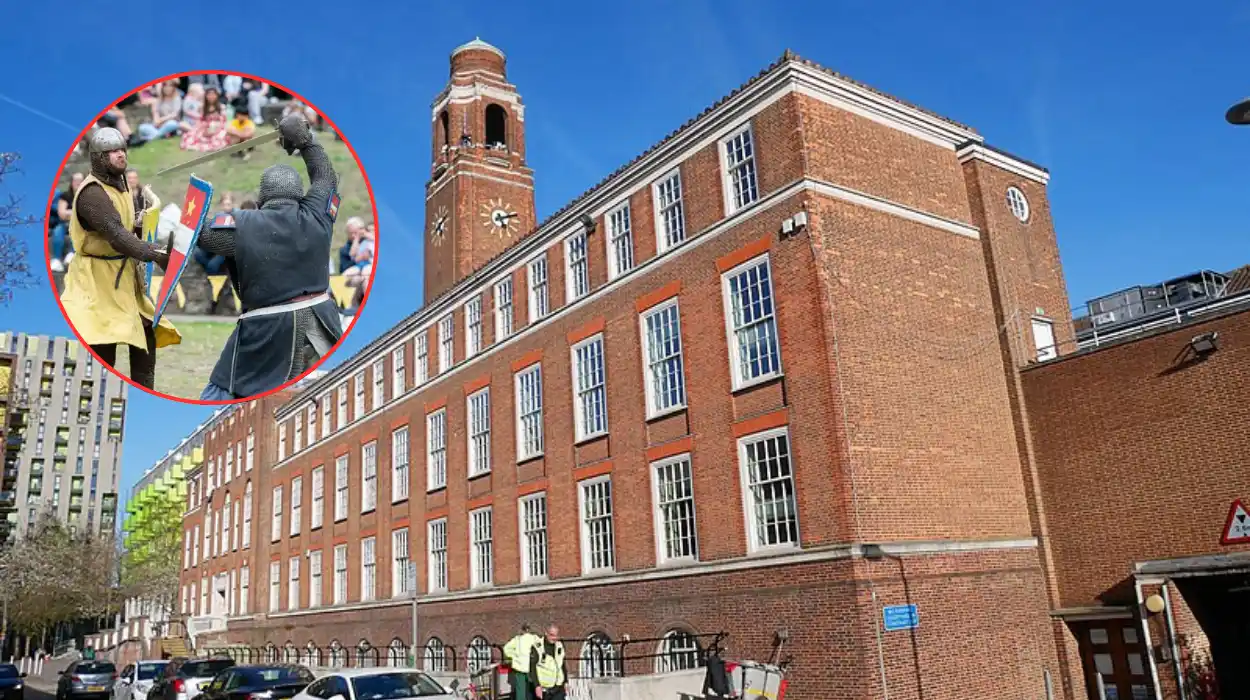Barking & Dagenham (Parliament Politics Magazine) – Barking Abbey became a medieval battleground as hundreds gathered to watch knights reenact skirmishes from a thousand years ago in a lively historical event.
The battle took place in the remains of an old structure that was once one of the most important locations in Saxon and Norman England for rulers to make decisions about the future of their nations.
The Ancient Abbey event featured medieval minstrels and battle scenes reenacted as part of a live history weekend.
After witnessing a royal audience featuring players portraying King Henry VIII and Anne Boleyn, the twenty-first-century viewers participated in bellringing with medieval workshops in St. Margaret’s Church, which is still in use today.
As part of the Barking Abbey exhibition, which runs through the end of the year, Dagenham’s Valence House also hosted medieval culinary and archery demonstrations.
Barking and Dagenham Council organized the two-day celebration with funding from the National Lottery Heritage Fund.
“So many people come along,”
deputy council leader Saima Ashraf said.
“They have gone away with greater appreciation of our rich and influential history.”
When William the Conqueror gave the monastery royal title, historians were available to tell him its tale.
However, Barking Abbey dates back to Saxon England, at least four centuries ago.
Originally constructed from wood, wattle, daub, and ancient Roman tiles, it was founded by St. Erkenwald, the Bishop of London, circa 666 AD.
But trouble was on the way. Two centuries later, in 870 AD, the nuns were forced to escape to London as the abbey was besieged by Viking raids. They took refuge at All Hallows Church by the Tower.
When William the Conqueror gave the monastery royal title, historians were available to tell him its tale.
However, Barking Abbey dates back to Saxon England, at least four centuries ago.
Originally constructed from wood, wattle, daub, and ancient Roman tiles, it was founded by St. Erkenwald, the Bishop of London, circa 666 AD.
But trouble was on the way. Two centuries later, in 870 AD, the nuns were forced to escape to London as the abbey was besieged by Viking raids. They took refuge at All Hallows Church by the Tower.
According to Goscelin, a medieval author, “the miracle of St Ethelburga” involved calling forth a lion, bear, and wolf to protect the monastery.
However, he also documented another Viking invasion in which the invaders burned the place on fire after the nuns defiantly locked themselves within.
Later, King Edgar restored the abbey, making it one of the most influential places of worship in Saxon England.
The Normans followed. Barking Abbey was granted a royal charter by William the Conqueror in 1066, and he even stayed there while constructing his Tower of London.
The surrender of the Saxon nobility, the Earls of Northumbria and Mercia, as well as the Saxon Queen Ealdgyth, widow of the vanquished King Harold, were also given to William at the abbey.
But after nine centuries, everything fell apart when Henry VIII’s Reformation in 1539 demolished England’s most powerful monastery along with the others.
Barking Abbey, which hosts outdoor classical concerts every May, is now just a heap of ancient bricks in Abbey Green Public Park.
The Abbey foundations were salvaged and saved when the ruins were dug up in 1911.
What historical reenactments took place during the Battle of Barking Abbey?
Battle reenactments featuring knights skirmishing, recreating medieval combat scenes that transported visitors a thousand years back in time.
A royal audience with Henry VIII and Anne Boleyn, offering an immersive glimpse into Tudor-era court life.
The event drew over a thousand people and combined live action with educational talks and archaeological exhibitions to celebrate Barking Abbey’s rich history. It was funded by The National Lottery Heritage Fund and organized by the local council and volunteers to engage the community deeply with the borough’s medieval heritage.
At the Valence House Museum, visitors experienced medieval cooking demonstrations, minstrel music, birds of prey exhibits, and archery displays.


